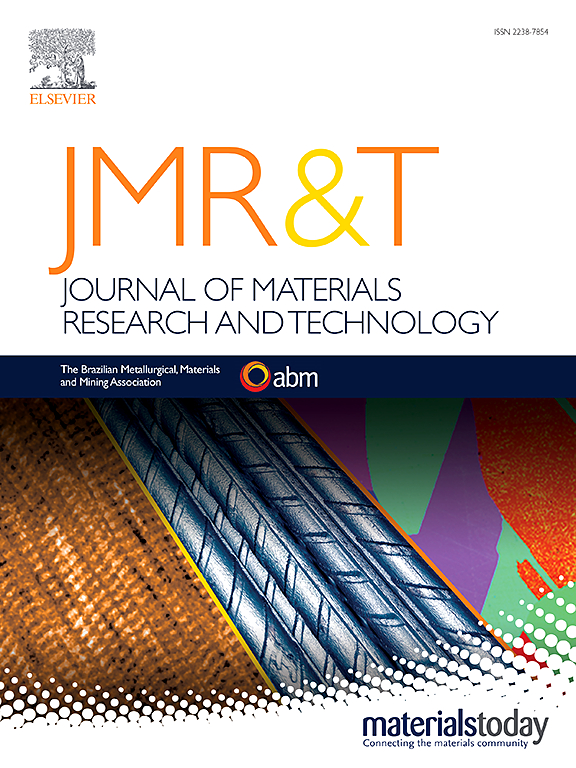Combining in-situ technology to study the influence of bainite morphology on the strength and toughness properties of medium-carbon bainitic steel
IF 6.2
2区 材料科学
Q1 MATERIALS SCIENCE, MULTIDISCIPLINARY
Journal of Materials Research and Technology-Jmr&t
Pub Date : 2025-03-12
DOI:10.1016/j.jmrt.2025.03.106
引用次数: 0
Abstract
The microstructure of bainitic steel was controlled through continuous cooling in the medium-temperature region. The influence of cooling rate on the microstructure and its effects on the strength and toughness of bainitic steel were investigated using transmission electron microscope (TEM), electron backscatter diffraction (EBSD), and X-ray diffraction (XRD). Experimental results indicate that as the cooling rate increases from 0.1 to 4 °C/s, the microstructure evolves from granular bainite to lath bainite, characterized by a high-density interface. At higher cooling rates, the samples exhibit enhanced strength and impact energy, attributed to dislocation strengthening and fine-grained strengthening mechanisms. Additionally, the presence of high-angle grain boundaries and filmy retained austenite within the microstructure contributes to improved toughness. Conversely, at a cooling rate of 0.1 °C/s, martensite/austenite(M/A) constituents and low-stability massive retained austenite do not favorably influence toughness improvement; however, increased retained austenite delays necking onset and promotes uniform plastic deformation. Combining in-situ phase transformation and tensile analysis, it is evident that phase transformations significantly affect tensile strain distribution. Specifically, temperature selection and the driving force for phase transformation influence the variation in size and orientation, thereby affecting strain distribution during tensile testing.
结合原位技术研究了贝氏体形态对中碳贝氏体钢强度和韧性的影响
通过中温区连续冷却控制贝氏体钢的显微组织。采用透射电镜(TEM)、电子背散射衍射(EBSD)和x射线衍射(XRD)研究了冷却速率对贝氏体钢微观组织的影响及其对强度和韧性的影响。实验结果表明,当冷却速率从0.1℃/s增加到4℃/s时,组织由粒状贝氏体演变为板条贝氏体,其特征为高密度界面;在较高的冷却速率下,由于位错强化和细晶强化机制,样品表现出更高的强度和冲击能。此外,高角度晶界和薄膜状奥氏体的存在有助于提高显微组织的韧性。相反,当冷却速度为0.1℃/s时,马氏体/奥氏体(M/ a)成分和低稳定性大块残余奥氏体对韧性的提高不利;然而,残余奥氏体的增加延缓了颈缩的发生,促进了均匀的塑性变形。结合原位相变和拉伸分析可知,相变对拉伸应变分布有显著影响。具体来说,温度的选择和相变的驱动力会影响尺寸和取向的变化,从而影响拉伸试验过程中的应变分布。
本文章由计算机程序翻译,如有差异,请以英文原文为准。
求助全文
约1分钟内获得全文
求助全文
来源期刊

Journal of Materials Research and Technology-Jmr&t
Materials Science-Metals and Alloys
CiteScore
8.80
自引率
9.40%
发文量
1877
审稿时长
35 days
期刊介绍:
The Journal of Materials Research and Technology is a publication of ABM - Brazilian Metallurgical, Materials and Mining Association - and publishes four issues per year also with a free version online (www.jmrt.com.br). The journal provides an international medium for the publication of theoretical and experimental studies related to Metallurgy, Materials and Minerals research and technology. Appropriate submissions to the Journal of Materials Research and Technology should include scientific and/or engineering factors which affect processes and products in the Metallurgy, Materials and Mining areas.
 求助内容:
求助内容: 应助结果提醒方式:
应助结果提醒方式:


